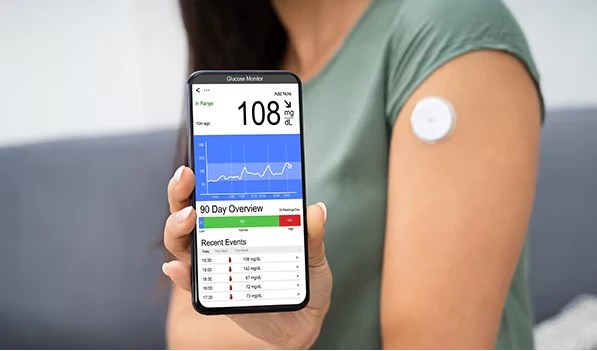Have you ever wondered how some individuals diagnosed with diabetes manage to bring their HbA1c levels back to non-diabetic ranges? I certainly did. For years, I struggled with fluctuating blood sugar levels, and despite my best efforts, my A1c test results never fell within the recommended range. However, everything changed a few years ago when I received a continuous glucose monitor (CGM) in the mail. This device transformed my approach to managing diabetes, and today, I want to share my journey and the strategies that helped me lower my HbA1c effectively.
The Power of Continuous Glucose Monitoring
On the very day I applied my first CGM sensor, I realized how much it could teach me about my diabetes management. With real-time data at my fingertips, I discovered that I could lower my HbA1c faster and more effectively than with any other method. The best part? Anyone with diabetes—whether type 1, type 2, or another form—can benefit from this technology.

Understanding Your A1C Levels
To achieve meaningful improvements in your HbA1c, it’s crucial to understand what your blood sugar levels should target. For instance, an A1C of 9% indicates an average blood sugar of about 212 mg/dL, which is quite high. The American Diabetes Association recommends aiming for an A1C of less than 7%, translating to an average blood sugar of less than 155 mg/dL. Personally, I aim for an A1C of 5.5% or lower, which corresponds to an average blood sugar of around 112 mg/dL. This goal requires consistent effort and monitoring.
Step-by-Step Process to Lower Your A1C
Here’s a simple 10-step process that has worked for me:
- Step 10: Commit to Change
When I showed a friend how to use a CGM after his pre-diabetes diagnosis, he quickly learned that home-cooked meals with vegetables kept his blood sugar stable compared to junk food. If you want to see improvements in your A1c, commit to making healthier food choices consistently for at least 60-90 days before your next test. - Step 9: Monitor Overnight Blood Sugar
Since we spend about one-third of our day sleeping, managing overnight blood sugar is vital. I focus on having a light dinner rich in fiber and protein while avoiding heavy meals that spike my blood sugar overnight. - Step 8: Choose Whole Foods Over Processed
The standard American diet is often high in processed foods that can spike blood sugar levels. Instead, I prioritize whole foods like vegetables, legumes, and lean proteins while minimizing processed sugars and unhealthy fats. - Step 7: Understand Glycemic Index
Learning about the glycemic index (GI) of foods has been crucial for me. By choosing low-GI foods and starting meals with salads or proteins, I’ve managed to control post-meal spikes in blood sugar. - Step 6: Manage Stress
My previous high-stress job led to significant spikes in my blood sugar levels. Since transitioning to a more relaxed environment focused on diabetes education and support, I’ve noticed remarkable improvements in both my blood sugar levels and overall well-being. - Step 5: Keep a Food Diary
Documenting everything I eat and my physical activity has been invaluable. Reviewing this information daily allows me to identify patterns and make necessary adjustments. - Step 4: Educate Yourself About Insulin Resistance
Understanding insulin resistance was a game-changer for me. The more insulin resistant you are, the harder your body has to work to manage blood sugar levels. Addressing this through lifestyle changes can significantly impact your A1C. - Step 3: Focus on Portion Control
While it’s important to eat healthy foods, portion control is equally essential. Being mindful of serving sizes helps prevent overindulgence in even healthy foods. - Step 2: Stay Hydrated
Drinking plenty of water has helped me maintain stable blood sugar levels. Staying hydrated supports overall health and can aid in better glucose control. - Step 1: Seek Support
Connecting with others who understand the challenges of living with diabetes has been incredibly beneficial for me. Whether through online communities or local support groups, sharing experiences can provide motivation and encouragement.
Conclusion
Lowering your HbA1c is not just about following strict diets or routines; it’s about making informed choices and understanding your body better. By implementing these steps into my daily life, I’ve managed not only to lower my A1c but also to improve my overall health and well-being.
If you’re looking for further resources on diabetes management, consider checking out these links:
- American Diabetes Association
- Centers for Disease Control and Prevention – Diabetes
- Mayo Clinic – Diabetes Management
- Diabetes UK
- National Institute of Diabetes and Digestive and Kidney Diseases
By sharing my journey and these practical steps, I hope to inspire others facing similar challenges in managing their diabetes effectively. Remember, you’re not alone on this journey!

